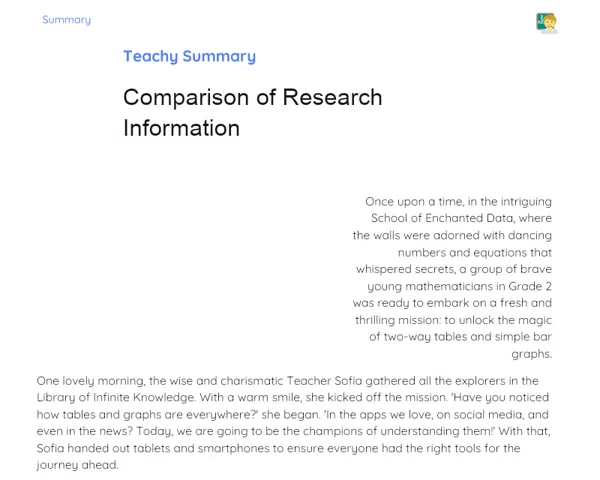Socioemotional Summary Conclusion
Goals
1. Understand the concepts of angle bisector and perpendicular bisector as geometric locations.
2. Identify the perpendicular bisector and the angle bisector in various geometric figures.
3. Develop socio-emotional skills by recognising and expressing emotions related to learning and collaboration.
Contextualization
Picture this: you’re about to slice a pizza so everyone gets an equal share or you need to find the exact spot where two roads meet. These are real-life examples of how the ideas of angle bisector and perpendicular bisector come into play. Grasping these concepts not only helps in solving mathematical puzzles but also lets us appreciate symmetry and balance in our everyday surroundings!
Exercising Your Knowledge
Angle Bisector
The angle bisector of an angle is the ray that divides the angle into two equal parts. Think of it like adjusting a pair of scissors to cut perfectly in half; this embodies the concept of the angle bisector. It’s not only a mathematical skill but also a practical one that emphasises precision and balance in daily tasks.
-
Definition: The angle bisector splits an angle into two equal angles, creating balance.
-
Practical Applications: A vital tool for various tasks such as making precise cuts and creating symmetrical designs.
-
Socio-emotional Relevance: Enhances skills of precision and attention to detail, valuable in both schoolwork and everyday life.
Perpendicular Bisector
The perpendicular bisector of a line segment is the line that cuts through the segment at a right angle, right down the middle. This means the perpendicular bisector splits the segment into two equal lengths. When you’re hanging a picture and need to make sure it's equally spaced from the edges of the wall, you’re applying the idea of the perpendicular bisector.
-
Definition: The perpendicular bisector is the line that evenly divides a segment and is perpendicular to it, ensuring each endpoint is equidistant.
-
Practical Uses: Essential in construction and design for maintaining symmetry and balance.
-
Socio-emotional Relevance: Encourages problem-solving and decision-making skills rooted in balance and fairness.
Geometric Location
A geometric location refers to all the points that satisfy a particular condition. For the perpendicular bisector, it’s the set of points equidistant from the segment's endpoints. For the angle bisector, it’s the points equidistant to the angle’s sides. These definitions help simplify and structure our approach to complex problems.
-
Definition: A collection of points meeting certain criteria, providing order to geometric concepts.
-
Practical Example: The perpendicular bisector as the collection of points from which the endpoints of a segment are an equal distance.
-
Socio-emotional Relevance: Aids in comprehending complicated situations, fostering analytical skills and concentration.
Key Terms
-
Angle Bisector: Ray that divides an angle into two equal angles.
-
Perpendicular Bisector: Line that cuts a segment in half at a right angle.
-
Geometric Location: Set of all points that meet a specific property.
For Reflection
-
How can you use the principles of angle bisector and perpendicular bisector in areas outside of maths? Think about your everyday tasks.
-
What feelings did you experience while learning about angle bisectors and perpendicular bisectors, and how did you manage those feelings? Did this enhance your understanding of the material?
-
How did collaborating with others to pinpoint angle bisectors and perpendicular bisectors refine your social skills and empathy towards your classmates?
Important Conclusions
-
The angle bisector steps in to divide an angle into two equal measures, bringing clarity to geometric tasks.
-
The perpendicular bisector is a line that perfectly divides a line segment from the middle, ensuring balance.
-
Recognising angle bisectors and perpendicular bisectors as geometric locations simplifies our approach to solving practical problems.
-
Cultivating these skills boosts not just performance in mathematics but also fosters teamwork and effective communication.
Impacts on Society
The concepts of angle bisector and perpendicular bisector play significant roles in our daily lives. From slicing pizza evenly to ensuring a building's symmetry, these ideas are fundamental to many practical activities. Mastering these concepts heightens our precision and organization in various life aspects, empowering us to tackle problems effectively.
On an emotional level, grappling with angle bisectors and perpendicular bisectors teaches us resilience and perseverance. Drawing accurate lines and angles instills important qualities like attention to detail, skills that are useful not only in maths but in any field that demands focus. This cultivates a growth mindset where every misstep is viewed as a learning moment.
Dealing with Emotions
Utilise the RULER method when studying angle bisectors and perpendicular bisectors. Start by acknowledging the emotions you experience, like frustration or elation. Understand what triggers these emotions and label them. For instance, frustration may arise from mistakes, while satisfaction comes when a concept clicks. Share how you feel with classmates or jot it down in a journal. Lastly, regulate your emotions through techniques such as deep breathing or taking short breaks to enhance your focus and studying efficiency.
Study Tips
-
Practice sketching angle bisectors and perpendicular bisectors in various geometric shapes at home to solidify your understanding.
-
Create study groups with classmates to discuss questions and share problem-solving approaches.
-
Use apps and online resources that provide interactive exercises and instant feedback on geometric concepts.



